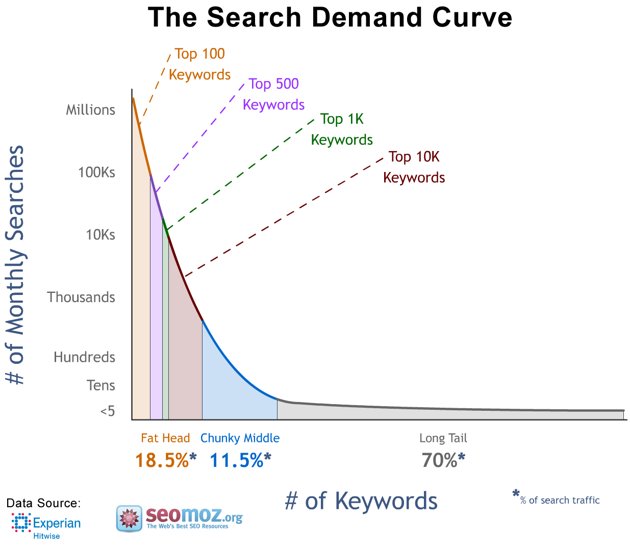There's an ongoing trend that's undermining companies' digital and search engine marketing efforts, regardless of the industries they're in.
They start out with good intentions and a strong strategy, putting large amounts of time and effort into building up their profile with search engines. Usually, doing so provides positive results: They'll start ranking well for some competitive keywords, and a good share of traffic starts coming from organic search results.
When that happens, many companies get optimistic and start dedicating even more resources to search engine optimization (SEO).
Then, suddenly, disaster strikes: Progress starts slowing down, and organic traffic stops growing.
That "SEO plateau" affects almost every business that uses search engine marketing as part of its marketing strategy. Getting past the plateau is one of the greatest challenges of online businesses.
How to Overcome the SEO Plateau
Hopefully, your business has already achieved that magical combination of strong content and high ranking through SEO. With your strategy in place, you don't have to put much effort into keeping things on track.
At the same time, you might be starting to notice diminishing returns. Maybe your organic traffic isn't growing as much, or your rankings for the most important keywords are stagnant.
If that's the case, you can take various steps to improve your SEO performance. Consider adding the following tactics to your strategy.
1. Identify new keywords and create content to rank for them
When you rank well for particular keywords, it's a sign that search engines have identified your website as an original and valuable source of information.
Take advantage of that opportunity by creating content around keywords that give you more exposure and drive traffic to your site.
If you're tracking the ranking of only major keywords related to your industry, you're potentially passing up a large share of search volume, which is composed mostly of long-tail keywords, according to most SEO experts.

Source: Advanced Web Ranking
If your content is ranking well for competitive keywords, then it's very likely that creating content that targets long-tail (and hence less-competitive) keywords will allow you to quickly achieve prominent rankings, as well.
Employ tools, such as Keyword Tool and Ubersuggest, and check forums, such as Quora and Reddit, to see how audiences are talking about topics related to the areas in which you want to establish yourself as a thought leader. Then, write and publish content related to those topics.
Once you've come up with the copy, take advantage of the cornerstone content approach to improve your positioning for more competitive terms.
Also, identify keywords for which you rank near the top—either somewhere around fourth or fifth position in the search results, or near the first page, in the 11th or 12th position; use Google Search Console to help you keep track. Review your content on the ranking pages and look for opportunities to improve by adding more backlinks, which will improve your rankings.
2. Ensure better-looking search results in SERPs
Many people don't realize how importance the appearance—the "look"—of content is in SERPs (search engine results pages). It might help to think of SERPs as a marketplace where people come looking to "consume" a particular product (or to simply obtain information), and where all the pages that rank for a particular term are the merchants.
No matter where they're located in the marketplace—i.e., how close they are to the top of SERPs—some pages do a better job than others of convincing people to click them.
Aim to improve how your content appears in SERPs if you want to get more organic traffic. Work to improve your meta titles and descriptions, and make sure you compare your efforts to your competitors'.
Also, look for ways to make your content richer; schema.org can give you some ideas that'll point you in the right direction.
The SERP click-through rate (the proportion of people who see your content and click it) is important not only because it attracts more traffic to your site but also because search engines use it as a signal for their ranking algorithms.
3. Aim for multiple rankings
Perhaps you've noticed that some websites rank with multiple pieces of content for a particular search result.
Although you should focus your efforts on getting just one piece of content to rank for a particular keyword, achieving multiple rankings would be ideal.
4. Target customers throughout the entire buyer funnel
Many marketers choose to focus on targeting head terms with their SEO, which is a solid approach since these high-volume keywords are known to convert. The downside of head terms is that they're probably part of your competitors' SEO strategies for the very same reason.
Focusing on these terms also means you're targeting only those prospects that are likely further down the funnel of the buyer-decision process.

At the same time, it usually takes multiple interactions with prospects before they become customers.
Use that fact to your advantage by employing the content mapping technique, which helps you create content that targets the same type of prospective buyer in various stages of their buyer journey.
5. Target a larger audience
Even though you probably have a good idea of who your customers are, it won't hurt to analyze your client base to see whether there are customer segments that hold potential for growth.
Examining the audiences your competitors are reaching, along with the combination of keywords, content types, and messaging they're using, will also provide you with valuable information and ideas related to expanding your audience.
6. Analyze the default traffic funnels
Most major analytics services, including Google Analytics, allow you to track data related to how visitors use your site, including where they land, how long they stay, what their "path" is on your site from page to page, and how many of them convert to email subscribers or even customers.
Use that information to find the most profitable user flow on your site, determining what pages drive the highest-converting traffic and the best ways to close the sale with them, for example.
When you have a better understanding of this side of your business, you can invest more of your resources into getting traffic to those pages and improving their content.
Conclusion
What's a guaranteed way to break through the SEO plateau? Continually create new, high-quality content.
Improvements in the algorithms of search engines over the past few years have enabled them to achieve tremendous sophistication; accordingly, as Google and its competitors get better at determining content quality, they'll be even more willing to adjust their algorithms to reward sites that go the extra mile.
For marketers, it's especially important to cultivate the habit of listening to audience and understanding how their needs and priorities are changing. Doing so will allow you to stay ahead of the curve and give you more ideas for creating new content to improve your SEO performance.




